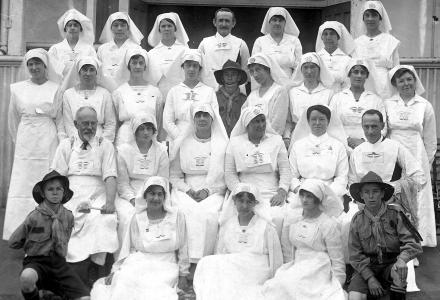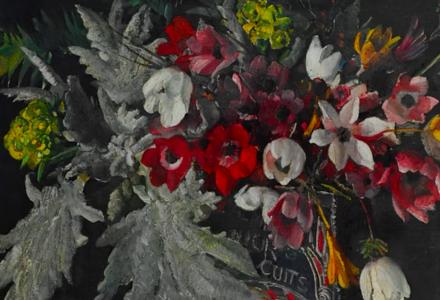Norman Gibbins enlisted in August 1914, the month Australia went to war. A veteran of South Africa (where he rose to the rank of Captain), he enlisted as a private—such was his haste to serve again. Gibbins was amongst the first ashore at Gallipoli and there he was commissioned for bravery in the field. Then Norman Gibbins went on to fight at Fromelles, Australia’s first major engagement in France.
Fromelles was a pointless diversion during the battle of the Somme, a case study of the Great War’s callous incompetence. Over five thousand Australians (and a comparable number of British troops) were killed, wounded or taken prisoner in less than 24 hours. The Australian casualties in a single day exceeded the combined Australian tolls for the Boer War, the Korean War and the Vietnam War. And the attack failed in all its objectives.
The battle plan for Fromelles was bungled from the outset. A preliminary bombardment failed to destroy enemy machine gun or artillery but gave every notice an attack was imminent. Men were told to advance across open ground under heavy fire and take the third line of the German defences. But there was no ‘third line’ at Fromelles, just a series of drainage ditches cut through the sodden fields of Flanders. The men under Norman Gibbins’ command were stranded in No Man’s Land and cut to pieces by ‘grazing fire’ sweeping over the wheat fields.
Gibbins held the ground he had taken until the very end, waiting until the last hopeless minute to retire. ‘There was no braver man in the action that day’, one report reads, ‘Capt. Gibbons fought his way back with a pistol in one hand and a bomb in the other.’ Norman Gibbins refused to leave his wounded men behind. And he was shot through the forehead on reaching the Australian parapet.
Norman’s sister Violet learned of his death several days later. She pleaded for his letters, his medals, and ‘all the precious personal belongings which may have been removed from his dear body on the battlefield’. She chose the inscription for his grave, and entrusted his letters to the Australian War Memorial ‘so the nation would never forget his sacrifice.’ And as for many others, Anzac Day became a focus for her grief. The principal of a private girls’ school, Violet Gibbins and her charges would work through the night on 24 April fashioning wreathes a yard in diameter to pile high on the Cenotaph. She did this for over a decade after her brother’s death. Then she established a scholarship in Norman’s name, a living memorial, carrying the memory of her ‘beloved’ from one generation to another. She educated her young women to be ‘fine, strong, sensible types of girlhood who will be ready and willing to serve the country in any capacity’ as had a brother ‘inexpressively dear’ to her buried in the Fields of Flanders.
Gibbins’ story reminds us that grief affected siblings as much as it did the wives, children or parents of the dead. It shows the way that Anzac Day could serve as a vehicle for mourning, and how the Cenotaph (literally an empty tomb) framed remembrance of the dead. Gibbins’ story also alerts us to the inequalities of commemoration. It was common practice to send men’s medals and personal effects to the oldest surviving male relative, denying female relatives the sense of connection many craved with the dead.
For full attribution of sources, suggestions for further reading and an extended version of the story itself see ‘Inexpressively dear to me: Norman Gibbins’ in Bruce Scates, Rebecca Wheatley and Laura James, World War One: A History in 100 stories (Melbourne, Penguin/Viking, 2015) pp. 42-45; 355.



